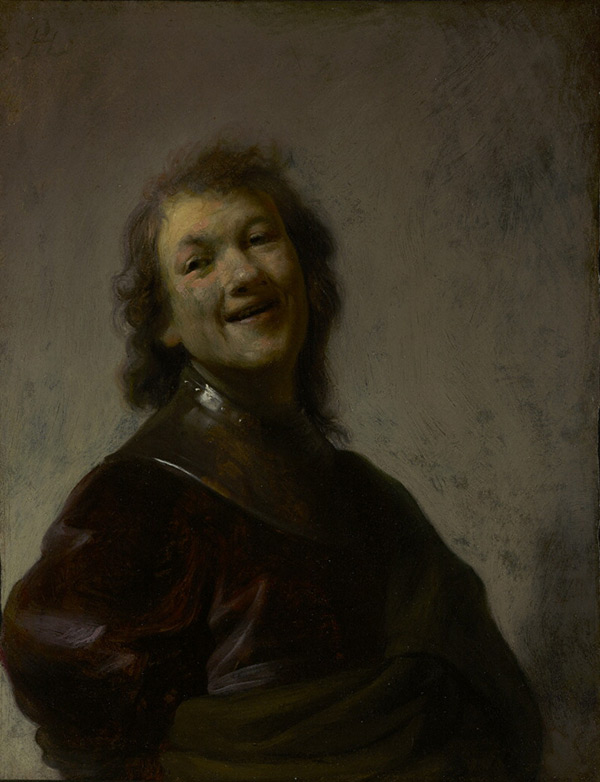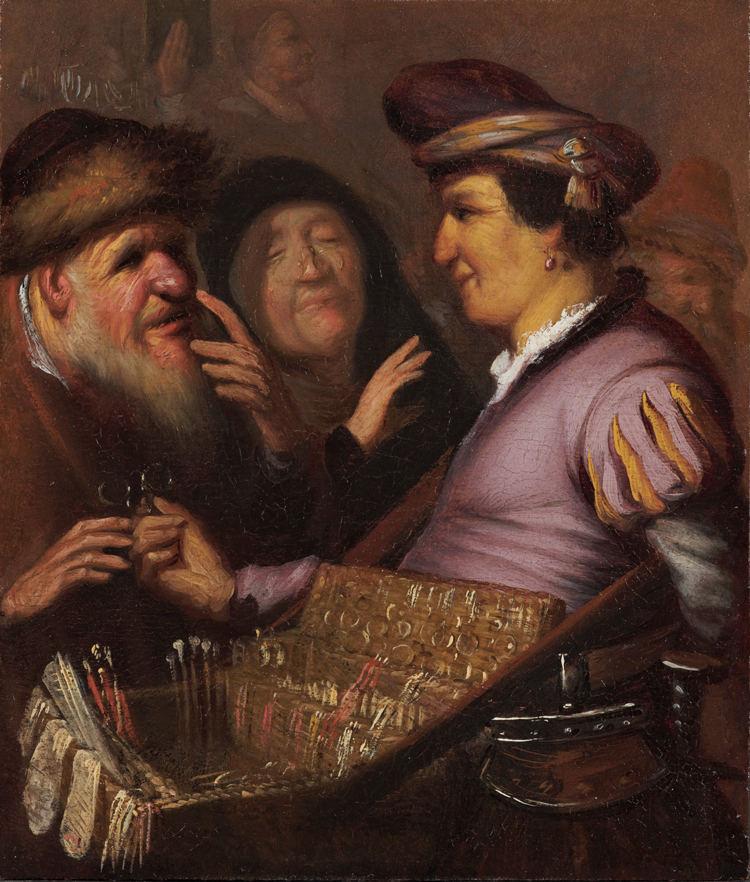May 11–August 28, 2016
J. Paul Getty Museum
The J. Paul Getty Museum is exhibiting three of Rembrandt’s earliest known paintings, lent by the Leiden Collection in New York, in a special installation highlighting the recentlyrediscovered
The Unconscious Patient (An Allegory of the Sense of Smell), 1624 .
One of a series by Rembrandt Harmensz van Rijn (Dutch, 1606 –1669) depicting the five senses, The Unconscious Patient, the artist’s earliest monogrammed signed painting, will be exhibited with two others from the series— Hearing and Touch —as well as other early Rembrandts.
“Rembrandt is unquestionably one of the greatest and most -loved painters of the European tradition, whose work still grips modern audiences as strongly as it did his own contemporaries,” says Timothy Potts, director of the J. Paul Getty Museum.
“This special installation provides a unique opportunity to witness him at the genesis of his career, some four hundred years ago, as a young man of only eighteen or nineteen just beginning on his professional career. While it is not yet the Rembrandt we know from his maturity, these works already demonstrate his experimental approach and show some of the emotional intensity that was to be an enduring features of his work. It is particularly appropriate to be bringing these works together for the first time at the Getty Museum, as we possesses the most significant collection of early Rembrandts in the United States. Complemented by other loans from Thomas Kaplan and Daphne Recanati - Kaplan’s Leiden Collection, this presentation represents a remarkable visual survey of the development of the artist. We, and other museums, are deeply grateful for Tom and Daphne’s continuing generosity in making his works accessible to a broader public.”
Until last year, only three of the five Senses were known to art historians.
The exhibition will feature The Sense of Smell along with
The Three Musicians (An Allegory of The Sense of Hearing) about1624,RembrandtHarmenszvan Rijn (Dutch,1606 – 1669) OilonPanel. Image Courtesy of the Leiden Collection, New York.
The Stone Operation (AllegoryoftheSenseofTouch)about1624, Rembrandt Harmenszvan Rijn (Dutch,1606 –1669)OilonPanel.Image Courtesy of the Leiden Collection, New York.
A fourth known picture from the set,
The Spectacle Seller (An Allegory of The Sense ofSight), is in the collection of the Lakenhal Museum in Leiden. The whereabouts of the fifth sense, an allegoryof taste, remains unknown.
“Rembrandt’s ability to convey emotions and create a compelling narrative on a small scale is fully evident in these fascinating and important paintings,” says Anne Woollett, curator of paintings at the Getty Museum. “Viewing these works with other important early paintings, including the Getty’s self -portrait

Rembrandt Laughing (1628)
and An Old Man in Military Costume (about 1630 –31),
shows Rembrandt’s desire to capture a range of human emotions and ages in paint, and how rapidlyhe developed in only a few short years. Thanks to the generosity of the Leiden Collection, the Senses allow us to trace this remarkable trajectory.”
In autumn 2015, The Sense of Smell surfaced at an auction in the United States. It has since entered the Leiden Collection, the private collection and gallery of Thomas S. Kaplan in New York that was already home to its sister pictures: The Sense ofHearingand The Sense of Touch.
Recently, The Sense of Smell was on view at TEFAF Maastricht where it caused a stir and commanded a great deal of attention. Two other Rembrandts from the Leiden Collection,
Portrait of a Girl Wearing a Gold -Trimmed Cloak (1632)
and Portrait of a Rabbi (about 1640 –45),
among other Dutch seventeenth -century paintings, have been at the Getty Museum on long-term loan and will be shown in conjunction with the Senses.
It is likely that Rembrandt painted the Senses in his hometown of Leiden in about 1624 to 1625, following his training with Jacob van Swanenburg (1571 –1638) and prior to six months in Amsterdam studying with the illustrious hi story painter Pieter Lastman (1583 –1633). The Senses attest to Rembrandt’s close relationship with his friendly rival in Leiden, Jan Lievens (1607 –1674), whose
Card Players(1623 –24),
also from the Leiden Collection, will be included in this special installation.
After being exhibited at the Getty Museum, the Senses as well as Rembrandt’s Portrait of a Girl Wearing a Gold -Trimmed Cloak and Portrait of a Rabbi will be exhibited internationally.





